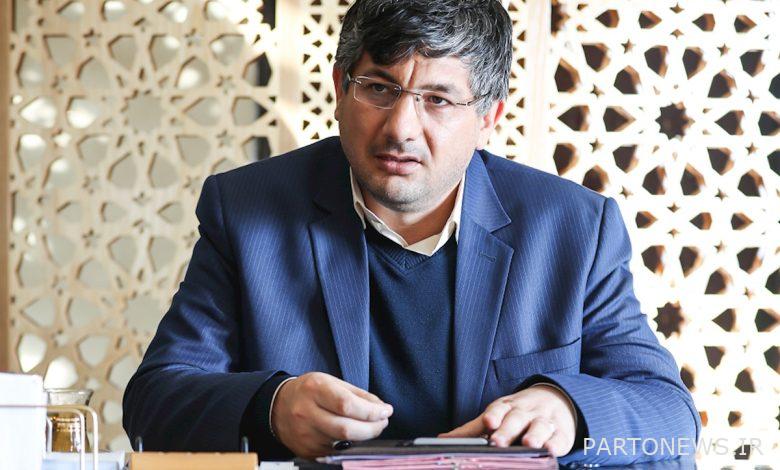What has been the profit of speculators from the car market in the last 6 months?

According to Tejarat News, between the beginning of June and the end of November 1400, at least 55,000 billion tomans of rent resulting from the application of the mandatory price was distributed in the car market. Last year, the figure for this rent was estimated at 120,000 billion tomans. Meanwhile, our country’s car industry is facing accumulated losses and debts to parts manufacturers in the amount of 120,000 billion tomans. The destination of this rent was checked.
According to studies, in a period of 6 months, ie from the beginning of June to the end of November, the distributed rent is estimated at 55 thousand and 500 billion tomans due to the price gap between high-circulation cars. This rent is calculated from the distance between the car price in the factory and the market and the sales statistics provided by the car manufacturers to the stock exchange.
Meanwhile, the distribution of rents from the distance between the prices of Iran Khodro’s factory products and the market is estimated at 43,000 billion Tomans. Is.
Previously, some automotive experts had estimated the distribution rent at 120,000 billion tomans by the end of 1999 due to mandatory pricing and the subsequent price gap between the factory and the market. In contrast, our country’s automobile industry has accumulated losses of 50,000 billion tomans and about 70 They recorded a debt of one thousand billion tomans to the parts manufacturers in their record.
Thus, in a situation where the country’s car manufacturers and consumers, due to incorrect policy-making and grammatical pricing, suffered huge losses, the market brokers and intermediaries gained astronomical profits from the market. Even now, insisting on the same wrong policies has led to the distribution of rents with astronomical figures in the car market, and more stray capital is attracted to this market every month.
Thus, stopping the increase in car prices, which was initiated by the President on November 10, this year, has widened the gap between factory and market prices, which means that car companies are deprived of more revenue and this liquidity flows into the pockets of traders and brokers.
About three weeks ago, President Ibrahim Ra’isi vetoed a car price increase at the origin. During this period, carmakers, despite their inner desire, were forced to offer their products at June prices.
This is in the context that the car market, influenced by other parameters affecting the macro-economy, went its own way and the car price chart in the market took an upward trend. In mid-November, the country’s two largest automakers updated their prices for new products. The price increase was around 16 to 19 percent for various products. The increase in car factory prices, according to forecasts, had a negative impact on the market and increased market prices. But after the increase in factory prices stopped, the market did not follow this event much and the prices remained more or less stable.
While the thirteenth government has been passive in discussing car price reform at the source for the past three weeks, and the market regulation headquarters as the new custodian of car pricing has not acted to reform car price at origin, despite the predictions made, the market due to political events And the economy, such as the start of negotiations to revive Borjam, as well as the volatility of the foreign exchange market, has somehow maintained its forward trend. Given the current situation, it can be said that the announcement of the increase in the price of car factories and its cancellation caused the price gap between market and factory prices to increase. This has happened due to the market impact of more parameters.
Experts have repeatedly argued that enforcing dictatorial pricing means double car prices, and that this does not help control car prices in the market and only makes intermediaries benefit from it. They suggest that the macro-policymaker move to eliminate regulatory pricing and replace it with a supply-demand mechanism. Experts believe that this route, in addition to guiding the price of the car to a single price and guiding the dealers to the exit doors, will also widen the way for liquidity to enter the car companies.
Lack of liquidity in the automotive chain has somehow become the industry’s main challenge. Automakers are struggling to pay off debts owed by auto parts companies, and auto parts activists say their lack of debt to automakers has weakened production capacity, resulting in an inability to timely inject parts into automakers’ production lines. . Under these circumstances, the macro-policymaker continues to insist on the implementation of grammatical pricing policy, and this has led to the continuation of this vicious cycle in the automotive industry.
There has been a liquidity crisis in the automotive industry that threatens the life of the industry, yet the shadow of mandatory pricing continues to weigh on the country’s auto industry. The car market (demand side) in addition to being affected by the supply of car manufacturers as one of the public markets of the country is affected by other components, both economic and non-economic, and the price of cars in the market goes its own way.
If the automotive policymaker replaces the policy of supply and demand with a mandatory pricing policy, the cash flow of the automotive market will change direction and move from the pockets of dealers to production. This allows automakers to strengthen their financial strength over a period of time by injecting liquidity by selling their products at market prices.
On the other hand, in addition to paying their debts to component makers, these companies can increase production. Increasing production has one consequence for the market and that is reducing car prices. Reducing car prices in the market is what the macro policy maker is looking for, but has chosen the wrong path (grammatical pricing policy) to achieve it.
Distributed rent from the sale of copies
The price gap between the market and the factory in the period of 6 months from the beginning of June to November of this year in 5 high-volume car groups of car companies, has distributed around 55 thousand and 500 billion tomans of rent in the car market. Since four car groups belong to Iran Khodro, the automaker’s products have a greater share in the distribution of rents in the market.
Studies show that in the mentioned period, road irrigation products for distribution have caused more than 43 thousand billion Tomans of rent in the car market and the rest of this amount, ie about 12 thousand and 500 billion Tomans, is the rent that Saipa products are sold by Tiba family. Distributed at market prices.
Now we go to Iran Khodro products to examine the trend of rent distribution due to the orderly pricing in the factory and the distance between these prices and market prices. We start with Peugeot Group as the largest production group of Iran Khodro products. The blue road giant under the Peugeot brand has produced about 11 products this year.
Products of Peugeot 206 group, members of Peugeot 207 family, all kinds of Peugeot Pars can be included in this car group. Since the prices of car factories are based on the prices listed on the Cadal website of the Exchange Organization and Iran, the automakers announce the average selling price for the Peugeot Group,
Therefore, in a period of 6 months, the average factory price of products produced under the Peugeot brand has been about 138 million Tomans. But the products manufactured by Iran-Khodro with the Peugeot brand in the market in the same period have been priced at about 315 million Tomans. The information of Kedal website of the stock exchange organization shows that the special road irrigations during the 6 months (from June to November of this year) sold a total of about 179,200 Peugeots.
According to these sales statistics and also calculating the average price of 177 million Tomans, the price gap between the factory and the market per Peugeot has been sold, so about 31 thousand and 700 billion Tomans of rent has been distributed in the market. Samand Group is also the second most widely used car group in Iran-Khodro.
The average sales of Samand Group factories in the mentioned period is estimated at about 134 million Tomans based on the information published on Kadal website. But the average sales of this car group in the market is around 265 million tomans, so there is a gap of about 131 million between market and factory prices for this car group.
If we multiply this price gap in the number of sales of this car group about 35 thousand and 500 units, it can be seen that from the sales area of Samand car group with orderly prices in a period of 6 months, about 4 thousand and 600 billion tomans of rent has been distributed.
Dena Group has the third place among Iran Khodro’s high circulation products. During this period, the automaker invoiced nearly 29,500 Dena vehicles to its customers. The average selling price of Dena Group in the factory has been about 215 million Tomans per device. But we see that the average market price for this car group is about 385 million tomans in the mentioned period.
The comparison of the two mentioned average prices shows that for each Dena device, about 170 million Tomans of rent has been paid to the intermediaries. If we calculate this amount of rent for about 29 thousand and 500 units of Dena sold, we will face a rent of about 5 thousand billion Tomans. Rana is also the fourth most popular car manufacturer in the 14th kilometer of the special road.
The blue giant of the special road has sold an average of 158 million tomans of Rana types in a period of 6 months. Examination of Rana prices in the market shows that this car has been available to buyers with an average price of 254 million Tomans in a period of 6 months. Therefore, the sale of each Rana device has resulted in a rent of around 96 million Tomans.
Iran Khodro’s financial statements show that the automaker has marketed more than 17,300 Rana vehicles during June to the end of November. The sale of this number of Rana, considering the price gap of 96 million Tomans, means that more than 1,600 billion Tomans of rent has been distributed in the market.
Now we go to the only product of Saipa, Tiba family. Road oranges for members of this family were offered to their customers at an average price of about 86 million Tomans in a period of 6 months. But the members of this family in the market cost an average of about 156 million tomans. Therefore, the average price gap between the factory and the market for the Tiba family is about 70 million tomans per device.
Sales statistics of the automaker living in the 15th kilometer of the special road show that this automaker has invoiced more than 177,200 Tiba vehicles for the applicants. Therefore, about 12 thousand and 500 billion tomans of rent has been distributed in the market from the sale of this number of Tiba family members.
Source: the world of economy
Read the latest car news on the Tejarat News car news page.

